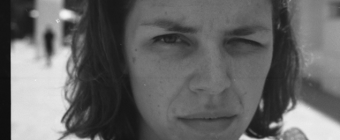Daily Archives: September 5, 2013
Cecilia Palmer and Orto Semi-rurali's workshop's details
Nature does not know the concept of waste; the only species
capable of making something no one desires is the human species.
Gunter Pauli, Zero Emissions Research and Initiatives.
Cecilia Palmer, together with Orto Semirurali Garten – a Bozener intercultural community garden -, will run a two-day workshop open to 16 participants in order to envision new forms of community development and interaction related to the activities of the garden.
The workshop aims to explore means of sustainable, collaborative design in practice and to gather a community in a joint effort in creating shelter for L’Orto Semirurali Garten using upcycled material. During a 2-day practical, collaborative session, the workshop will bring together students, the garden community and everyone in the neighborhood interested in getting to know L’Orto Semirurali Garten in a practical way.
We will work with upcycled materials, consisting of mainly worn clothing as a material base, in order to build the shelter that will be used to give shade and as a place to get together in the garden in the coming seasons.
During the two days we will collect worn clothing from the surrounding community and setup a temporary sewing workshop in L’Orto Semirurali Garten. Everyone is invited to join us making, sewing, cutting, remodeling and building this shelter together. We hope that after these two days, many hands will have assembled a patchwork sheet large enough to provide shade for the community during hot, sunny days.
Clothing, worn but clean, can be donated to the garden in advance (clothing accepted at the University or at the Donne Nissà Association between 9.30-12.30 Monday to Friday) or brought during the event.
The garden provides us with food, which together with shelter and clothing sum up our most basic material needs as humans. This workshop touches all three of these essential cornerstones, as well as how we can design or interact with them.
The natural loop in a garden is evident – we prepare the soil, plant the seeds, grow our crops, harvest them, prepare food from them and use the left-overs for compost to prepare new soil, and so the cycle of life goes on. Our clothing, on the other hand, is nowadays mostly a product of a globalized industry, wasting both natural and human resources, with thousands of tons of textiles ending up in landfill each year. It is an industry that creates a huge amount of waste, withvery little going back into the natural loop.
Upcycling design initiatives seek to find ways to complete this cycle of of resource use, in a similar way to that which happens in a garden. After all, most of us have a staple of clothing at the back of our wardrobes that we don’t use anymore, that might be out of fashion or might not fit anymore, but that is still of good quality. These are the resources that we seek to bring back into the loop by re-creating new garments or objects, in this case a shelter.
Upcycle = reuse (discarded objects or material) in such a way as to create a product of a higher quality or value than the original.
